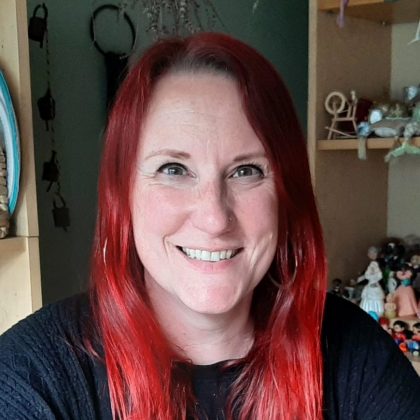Fairy tales and art therapy
Hot topic
In our latest hot topics article looking at developments in art therapy, Carol Arnold talks about using fairy tales in art therapy practice.
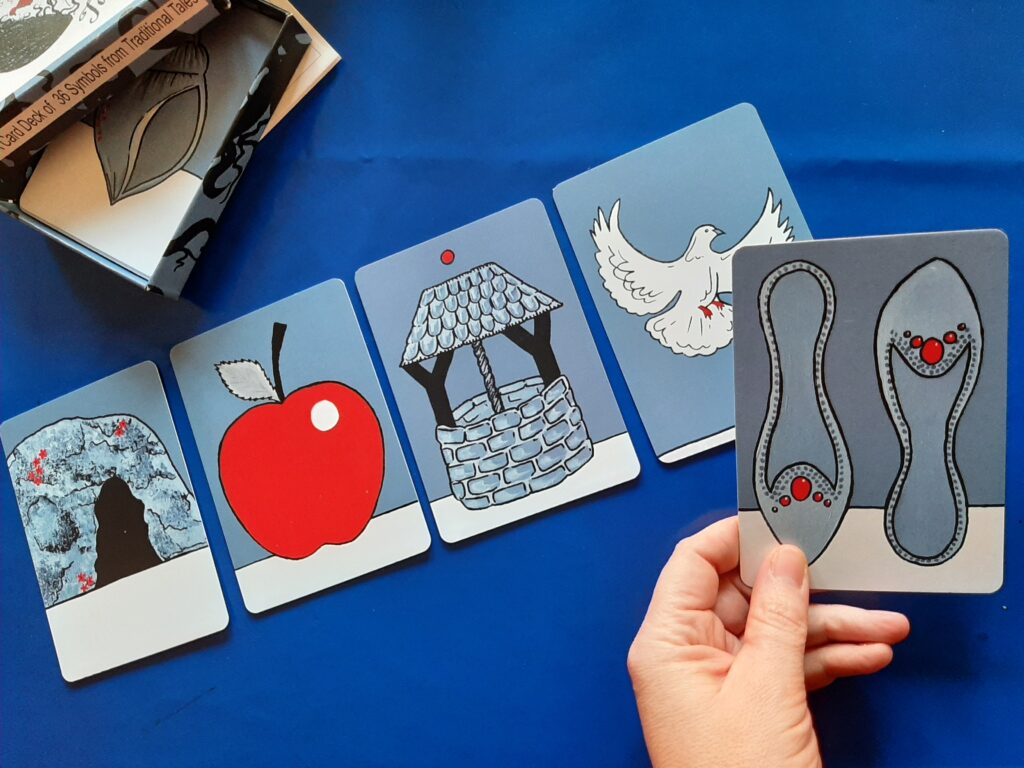
What are fairy tales?
Fairy tales are a genre of folklore that normally involve magic or fantasy, often set in an imaginary world. Many contain recurring motifs, symbols and characters. Some of the key characteristics of fairy tales are themes of good vs evil, morality and emotions such as love, hope, anger and revenge.
These stories come from all around the world, have evolved over centuries and have many different versions. They continue to capture people’s imaginations.
Why fairy tales are relevant today
Fairy tales are fluid in nature, changing and evolving in ways which reflect the concerns of the time. They are not set in stone and are repeatedly reimagined. Listening to stories from all around the world can help make connections between experiences and help us to reflect on the perspectives of others.
The archetypes, images and symbols in traditional stories such as fairy tales connect us to themes which have preoccupied humanity for centuries, providing a sense of connection.
Though fairy tales are sometimes thought of as children’s stories, they also have significance for adults. Each individual can create their own meanings and make personal associations if it feels appropriate to them.
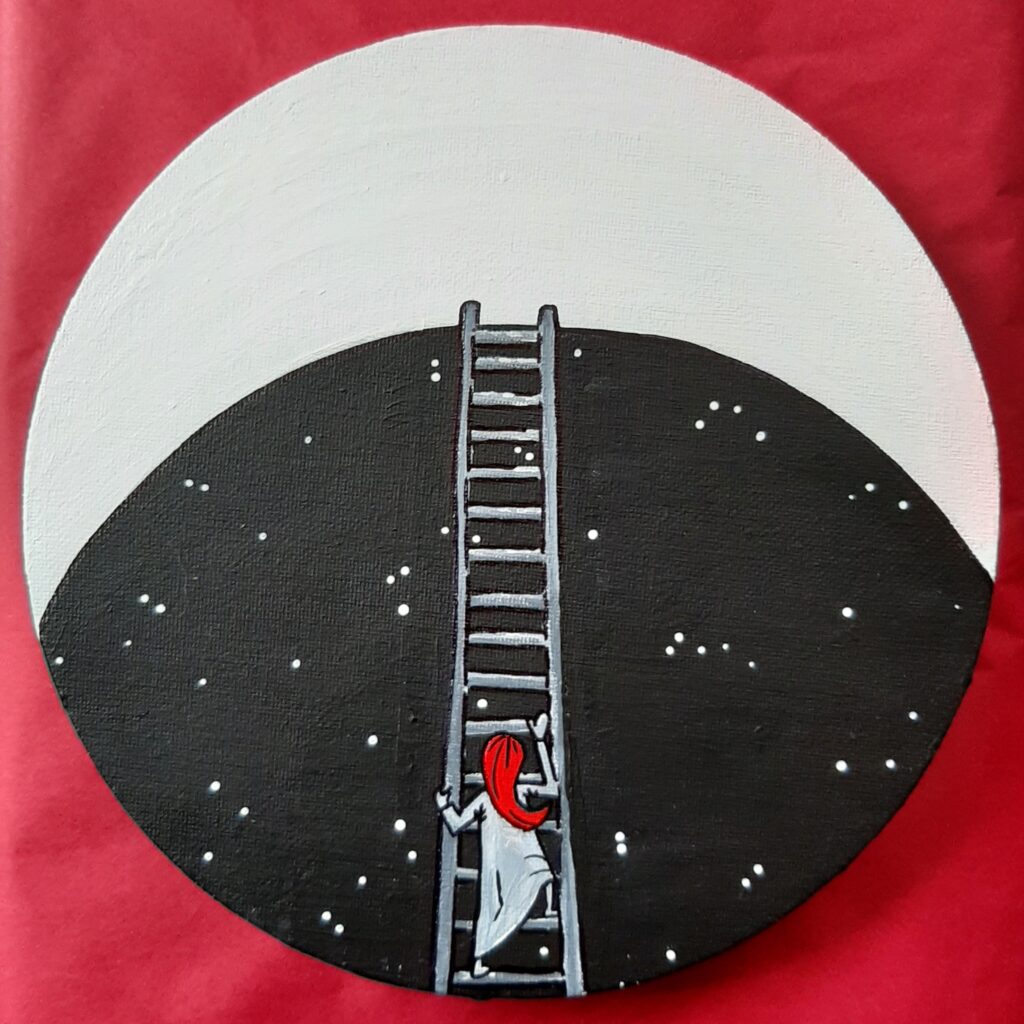
Fairy tales and art therapy
Some research reports the benefits of storytelling, including, in the field of neuroscience, how sharing stories can contribute to relationship building (Nastase et al., 2019) and decrease pain and stress (Brockington et al., 2021). Within the context of an established therapeutic relationship, traditional stories such as fairy tales may support the exploration of a client’s life (Sunderland, 2000).
Fairy tales in art therapy can provide a creative and powerful way to work. Staying within the metaphor of a story can provide distance – a way to view personal difficulties in a way that feels safe. Fairy tales have this feature built in, with opening and closing sentences (such as ‘once upon a time’ and ‘happily ever after’, though there are many variations on these). This containing, circular process can provide a frame around the content of the story and the material in the therapy session.
A tale known to the client might appear spontaneously during the work or be suggested by the symbols appearing in the images created. Fairy tales can also be worked with using pre-written stories and encouraging the exploration of their themes and symbols. A variety of carefully selected fairy tales from a range of sources could be included as part of the provision in the therapy room for the client to choose from.
Stories can be told or read, to or by the client. They can inform role play and image making, encouraging the exploration of characters and the scenarios they encounter. Because stories have power, it is important to reflect on the stories offered in therapy and consider the appropriate time to use them (Jones and Pimenta, 2021).
When speaking to other art therapists, I hear that fairy tales and fairy tale symbols appear in their therapeutic work. There appears to be an interest in discovering more about how fairy tales could be used in art therapists’ work.
What can art therapists bring to this topic that other professionals can learn from?
Stories can be engaged with no matter what theoretical perspective they are approached from and can therefore be useful to a wide variety of practitioners. Art therapists have access to the creative language of images as well as symbol and metaphor. Fairy tales also speak in this language, frequently creating vivid images in our minds as we hear them. In art therapy these images can be created and reflected on, providing a tangible way to explore reactions to the story.
Art therapists can also share the potential that working with this creative language can bring, especially with clients for whom verbal expression is difficult.
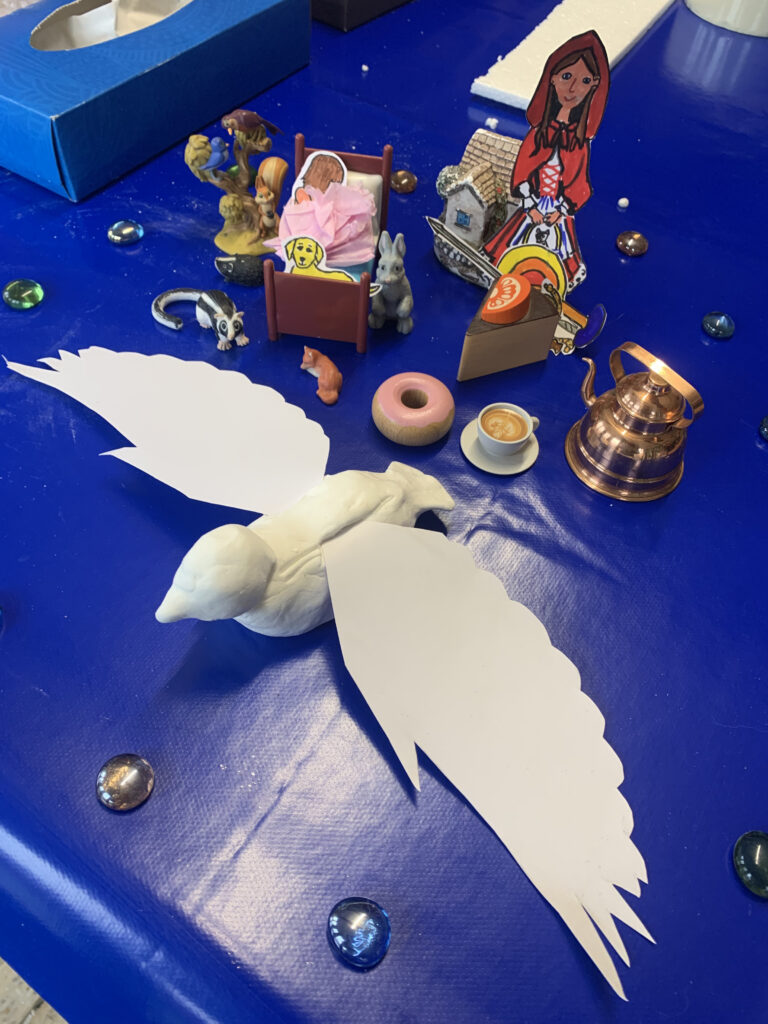
How using fairy tales can help
Using fairy tales can provide a powerful way to process and understand experiences. They enable the exploration of themes and concepts such as power, justice and truth. Some themes encountered within fairy tales can be difficult, featuring injustice and painful experiences, and require a careful approach. However, they often provide the protagonist of the story with a way out, an opportunity for change and transformation, and therefore give hope. By creating new versions of the tales, the client may also be encouraged to communicate what they would like to be different in the story and in their own lives.
The process provides the opportunity to tell personal stories, and to have them heard and witnessed by the therapist. Artworks created provide another way of sharing stories, reflecting on them and allowing changes to be made. The distance provided by the story means that connections to real life can be made only when it feels safe to do so. There can be benefits for a client even if they choose not to make these connections explicit (Sunderland, 2000).
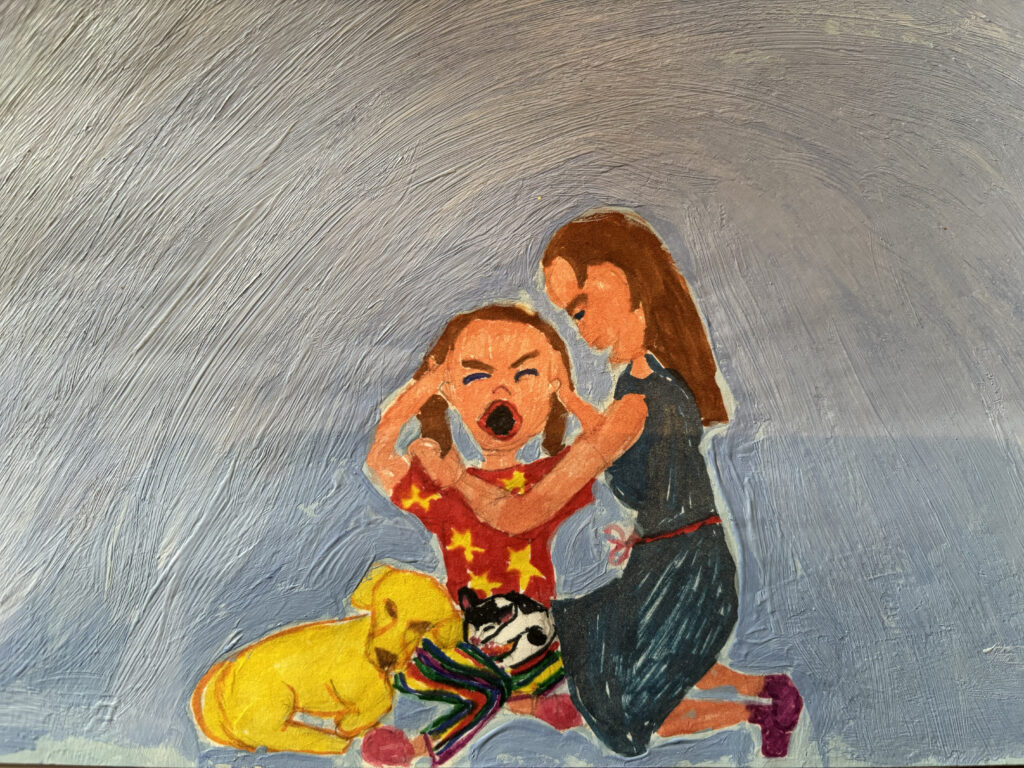
Fairy tales in art therapy practice and research
I began using fairy tales in my clinical practice over ten years ago whilst writing my dissertation for my art therapy MA. I found that introducing fairy tales into sessions offered the people I was working with more choice in terms of accessing important themes using the language of metaphor. I now use fairy tales in multiple ways within art therapy sessions, including reading stories chosen by the client, creating their own images for the story and exploring the feelings and motivations of story characters. I also use a set of fairy tale symbol cards I designed and fairy tale-themed story dice to allow clients to create their own stories using fairy tale imagery.
However, no matter which approach I use to offer fairy tales within a session, the invitation is always made with that particular person in mind and in a way that makes it clear that the individual can choose if, and how, they engage with a story. Here, an individual who worked with fairy tales powerfully describes how the process has helped their personal journey:
I am an adult survivor of childhood sexual abuse. I created two fairy tales whilst working with Carol. One was based on Little Red Riding Hood and one was the retelling of a story I’d written as a child. I found the fairy tales a really powerful way to embody my wounded inner child and to help her heal. I was able to take ownership of my story in a gentle way at my own pace. In a similar way to eye movement desensitisation and reprocessing (EMDR) therapy, I was able to go back to traumatic situations and rewrite what happened so I escaped. As a result of my fairy tale work, my nightmares and flashbacks decreased and I started to feel safer and more at peace. I also feel I was able to integrate parts of me that had ‘split’ as a result of the trauma.
Service user
Over the years, my curiosity about the mechanisms that are helpful to the people I work with when we use fairy tales has grown. Although we have some understanding that stories in therapy can act as a safe, non-direct way to explore painful experiences (Malchiodi, 2007), and allow them to be processed and suggest new possibilities (Griffin Banker, 1998), there is still much we do not know. I am currently researching how fairy tales are used in art therapy, and I am interested in what the creation of images adds to the process of using fairy tales therapeutically.
I look forward to continuing to co-produce further knowledge about fairy tales in art therapy with the people I work with in sessions and my art therapy and other professional colleagues over the years to come.
Learn more about using fairy tales in art therapy
Explore how fairy tales and their language of images can be an effective and powerful tool in art therapy.
References
- ‘Storytelling increases oxytocin and positive emotions and decreases cortisol and pain in hospitalized children‘ Brockington, G., Moreira, A., Buso, M., Gomes da Silva, S., Altszyler, E., Fischer, R., Moll, J. Proceedings of the National Academy of Sciences (2021)
- Griffin Banker, S. The Power of Art and Story; Women Therapists Create Their Own Fairy Tales, in Ed. A. Robbins ‘Therapeutic Presence; Bridging Expression and Form. Jessica Kingsley. (1998)
- Jones, P.& Pimenta, S. Storybook Manual; An Introduction To Working With Storybooks Therapeutically and Creatively. Routledge (2021)
- Malchiodi, C. The Art Therapy Sourcebook. McGraw Hill. (2007)
- Natase, S. A., Gazzola, V., Hasson, U., Keysers, C. Measuring shared responses across subjects using intersubject correlation. Social Cognitive and Affective Neuroscience August 7, 14(6): 667 – 685 (2019)
- Sunderland, M. Using Story Telling as a Therapeutic Tool with Children. Speechmark Publishing. (2000)
